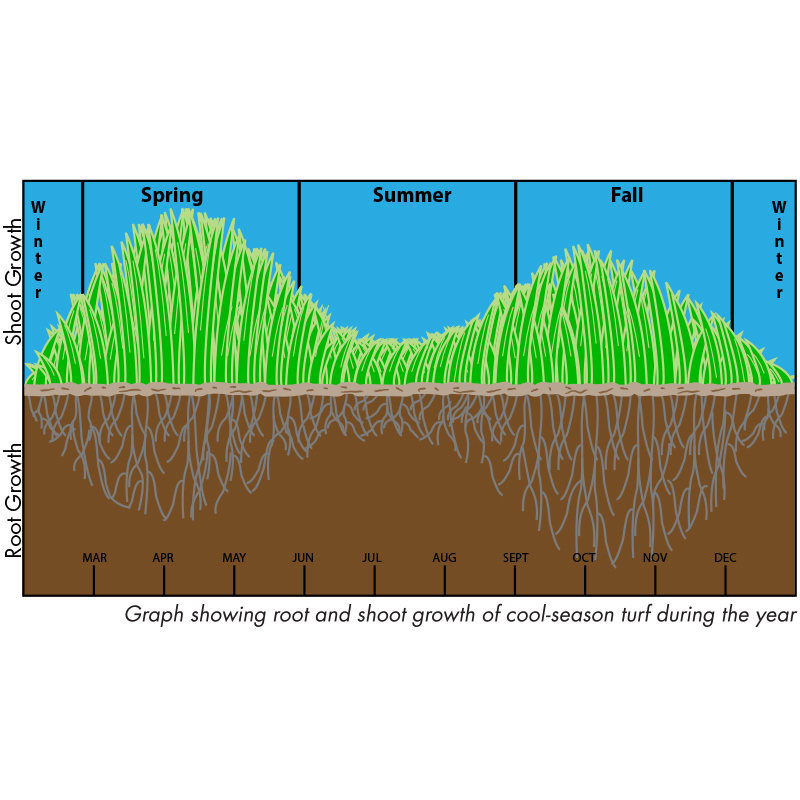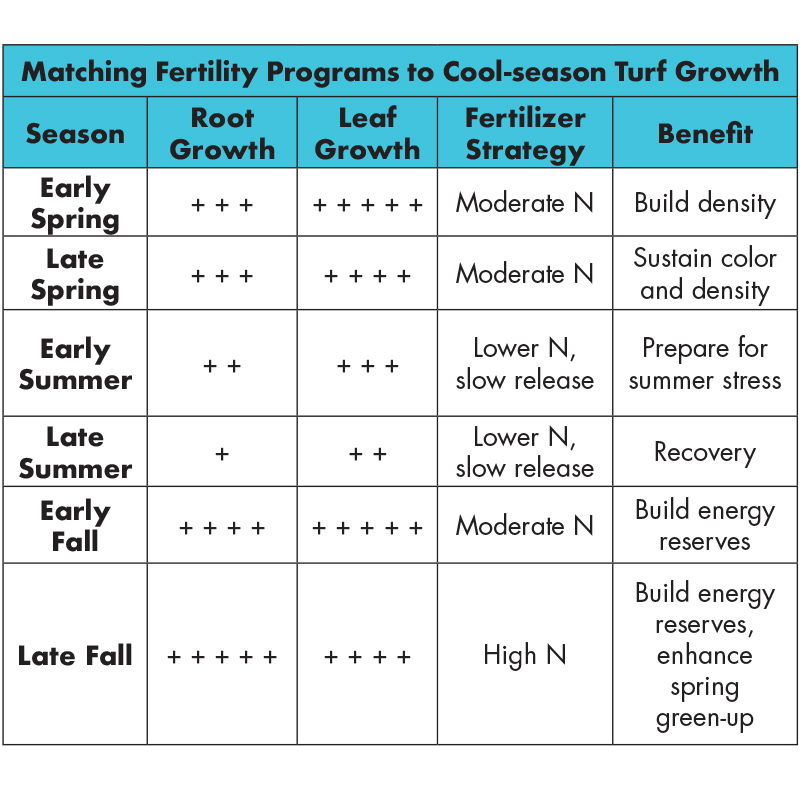
Cool-season Turf Grass 101
Depending on your climate, planting cool-season grass in your yard can provide you with a longer-lasting peak season so you can spend more time outdoors on a greener, healthier lawn—with less turf grass management.
What’s the Difference Between Cool- and Warm-season Grasses?
Although the scientific difference between cool- and warm-season grasses rests in how each performs photosynthesis, it all boils down to this: Cool-season grasses grow best during the mild months while warm-season grasses grow best during the warmer months.
Seasonal Patterns of Turf Grass
Cool-season grasses follow a seasonal pattern throughout most of the country:
- After emerging from dormancy in the spring, cool-season turf quickly grows
- The grass tolerates summer, but drought and high heat may cause it to turn brown and go dormant
- As the fall brings cooler weather rain, growth resumes
- Growth continues until the soil freezes
Cool-season turf grass remains active throughout the year in certain parts of the country, particularly the Pacific Northwest.

Which Climate Is Best for Cool-season Grass?
The most leaf and shoot growth for cool-season grass occurs when daytime air temperatures are between 60°F and 75°F and nighttime air temperatures are in the mid-50s. If the region you live in enjoys this temperature zone for most of the year, cool-season turf grasses may be ideal and deliver your best yard possible.
At air temperatures of 80°F and above, leaf growth slows down dramatically—if you’re in this zone most of the year, warm-season grasses may be a better bet. For both types of grasses, leaf growth is slight or halted when air and soil temperatures dip below 50°F.
Keep an Eye on Soil Temperatures
Soil temperatures regulate the root growth of cool-season grasses.
- Maximum root growth occurs in soil temperatures between 50°F and 65°F
- Minimal root growth occurs in soil temperatures between 33°F and 45°F
Root growth is heavily stunted when the top inch of soil reaches 75°F, and if soil reaches 90°F, roots near the surface can die.
When to Fertilize Cool-season Turf Grass
TruGreen® suggests using a customized fertilization schedule for cool-season turf grass based on your lawn’s needs. For example, overfertilization in the springtime can stimulate rapid shoot growth, in turn reducing your lawn’s root development and carbohydrate reserves. The benefit here is added density, but is the cost for your lawn worth it? You can learn more about carbohydrates and turf grass growth here. [Links to J.5.c Turf Grass Watering and Growth Page]
Another example is late fall fertilization. This takes advantage of a time when shoot growth is slowing but root growth is still happening. Plus, applying nitrogen to your lawn in the fall significantly boosts the production of carbohydrates, which are stored up for the next growing season. This improves your chances of enjoying an early spring green-up.
Check the chart below for tips on customizing your fertilization, or speak with a TruGreen expert to have a turf grass management schedule created for you.








